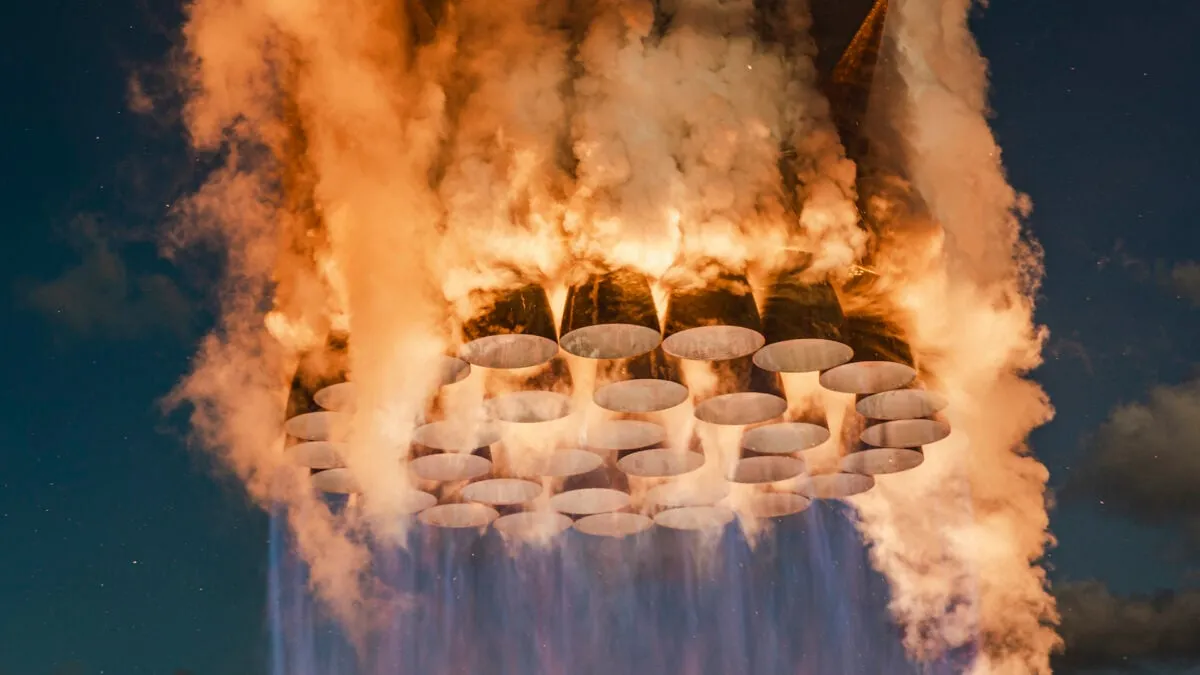
This past Monday, October 13, marked a significant milestone in space exploration as Starship Version 2 launched for the final time, concluding its nearly two-year journey on a triumphant note. The megarocket’s 11th suborbital test flight not only showcased its capabilities but also paved the way for an upgraded version, Starship Version 3, which promises to be larger and more efficient with its advanced Raptor engines.
Starship Version 3 is set to make its much-anticipated debut in 2026, marking the commencement of SpaceX’s orbital tests for its innovative launch vehicle. This new iteration of the Starship is designed to carry payloads into orbit and facilitate missions aimed at the Moon and Mars. With an increase of approximately five feet (1.5 meters) in height, this upgraded vehicle will have enhanced capabilities, including the ability to carry more propellant and the incorporation of new docking adapters for in-orbit fuel transfer.
Starship’s latest flight was another significant achievement for SpaceX. During this mission, the company executed several in-flight demonstrations, preparing for the upcoming launch of the rocket’s upgraded version. Following a suborbital trajectory similar to its past missions, the second-generation prototype successfully deployed eight Starlink simulators. While the last two flights were successful, they were preceded by a series of mission failures during the rocket’s initial three launches this year, indicating a turbulent journey for Version 2.
Now that Version 2 has concluded its run on a high note, SpaceX is shifting its focus towards the next generation of Starship and Super Heavy. “Focus now turns to the next generation of Starship and Super Heavy, with multiple vehicles currently in active build and preparing for tests,” stated SpaceX in a recent announcement. The next iteration will be crucial for the first Starship orbital flights, operational payload missions, propellant transfer, and more, as the company aims for a fully and rapidly reusable vehicle capable of servicing Earth orbit, the Moon, Mars, and beyond.
The upcoming upgrade to the current prototype will feature a larger vehicle capable of carrying increased amounts of propellant. Additionally, the rocket will be powered by a more robust and efficient version of its engines, known as the third-generation Raptor engines. According to SpaceX spokesperson Dan Huot during Starship’s 11th test flight webcast, “We’re also getting energy storage upgrades, tons of avionics changes—a lot of things that will enable longer-duration missions.”
To adequately prepare the rocket for missions extending beyond low Earth orbit, SpaceX plans to equip Starship with a ship-to-ship propellant transfer system. This system will be essential for refueling the vehicle in space. Huot noted, “One notable thing you’ll start seeing on the outside are these new docking adapters, which we’ll use when we bring two Starships together for propellant transfer. That’s a core capability of Starship that we’re going to demonstrate next year.”
As with any new vehicle prototype, the next-generation Starship will encounter a learning curve. In a recent interview, SpaceX founder Elon Musk acknowledged that “pretty much everything changes on the rocket with version 3.” He cautioned that the upgraded Starship “might have some initial teething pains because it’s such a radical redesign.” Given these new developments, it may take some time for Starship Version 3 to refine its orbital flight capabilities.
Musk has previously expressed his ambition to send an uncrewed Starship to Mars during the upcoming launch window next year; however, it remains uncertain if the rocket will be fully prepared for such an ambitious journey by then.